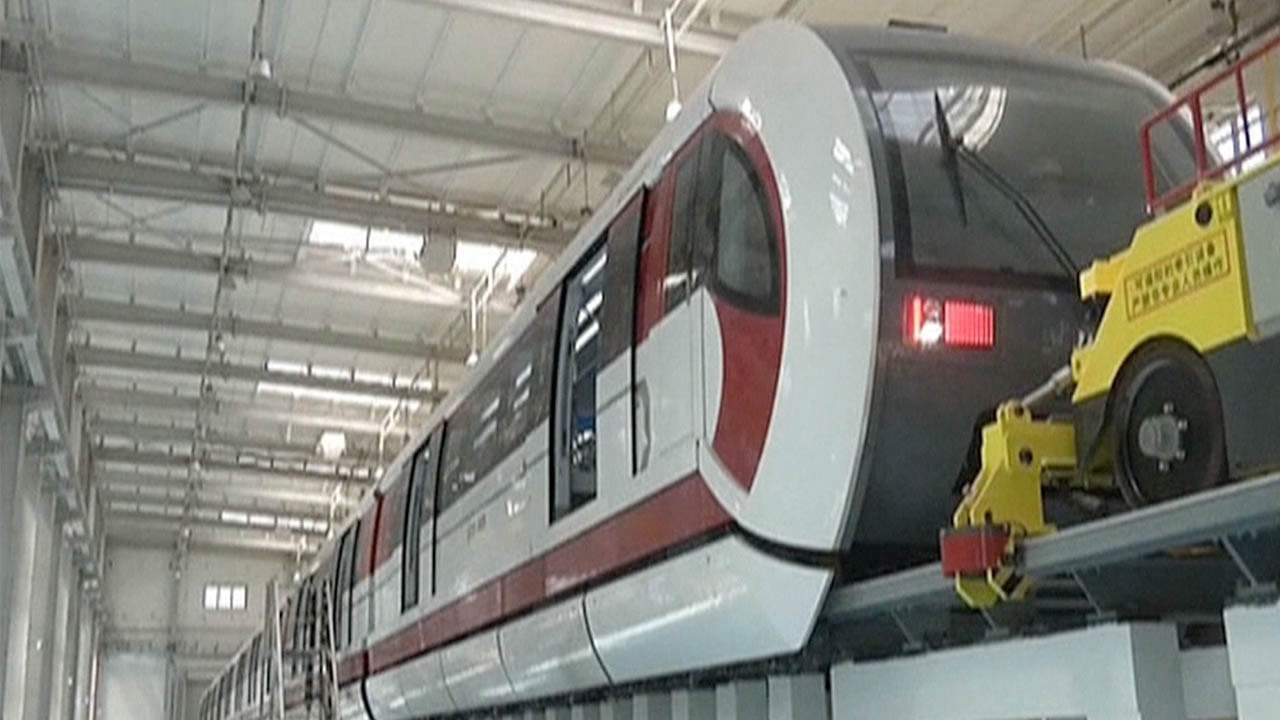Beijing’s first maglev line begins comprehensive testing

Engineers began comprehensive testing and debugging of Beijing’s first maglev line this week. It is expected to start a trial run before the end of 2017.
The overhead maglev line, named S1, uses sophisticated systems to maintain an air gap between the train and the rail.
It will be the first domestically developed automated subway on the Chinese mainland, said a spokesperson for the Beijing Municipal Commission of Housing and Urban-Rural Development.
S1 will run in the west, from Shijingshan district's Pingguoyuan to Shimenying in the mountainous Mentougou district. It will stretch about 10 kilometers and have eight stations.
The travel time between the two locations, currently connected only by bus, will be cut by two-thirds to just 20 minutes, according to the Beijing Major Projects Construction Office.
Once finished, S1 will connect with the subway's Line 1 and the western extension of Line 6, which is under construction.
Currently, Beijing has 19 lines covering 574 kilometers. A further 350 kilometers will be built this year.
Authorities say up to 90 percent of the city proper will have at least one subway station within 750 meters by 2020, at which point rail access will reach all of the city's 16 urban and rural districts.
Driverless trains are scheduled to be used on more planned lines, including an express line to the new airport being built in the southern Daxing district.
